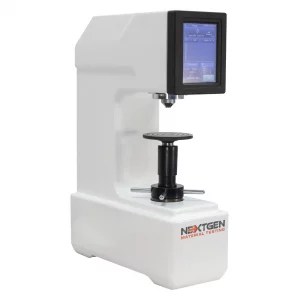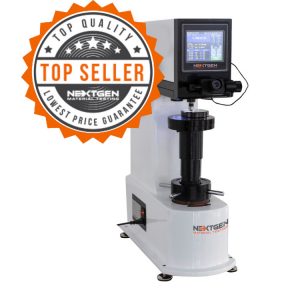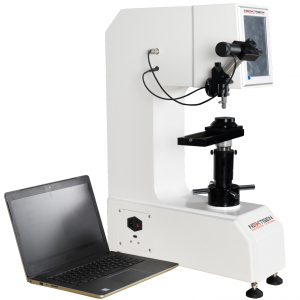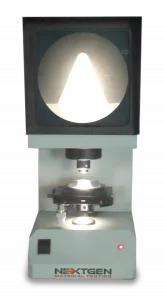ASTM (American Society for Testing and Materials) holds a leading position in the field of material testing, and in particular metal testing. Established in 1898, ASTM International is recognized globally for developing and publishing voluntary consensus standards that guarantee the quality, safety, and performance of various materials, products, systems, and services.
ASTM International has developed over 12,000 material testing standards, many directly related to metal testing. Compliance with these standards guarantees that products, procedures, and services are reliable, safe, and capable of delivering consistent and reproducible outcomes.
In this article, we will discuss the 10 most popular ASTM standards for metal testing, providing an overview of each and discussing the specific guidelines they offer for reliable testing and quality assurance.
What Are ASTM (American Society for Testing and Materials) Standards?
ASTM International’s history is rooted in the need to address technical issues that arose during the industrial revolution, particularly in the railroad industry. Engineers and scientists of that era recognized the necessity of standardized methods to guarantee the safety and reliability of materials and products. Over time, ASTM’s scope expanded significantly. Today, it encompasses a number of industries, including construction, petroleum, aerospace, consumer products, and, of course, material testing.
Standards developed by ASTM cover a broad spectrum of topics, such as material properties, testing methods, manufacturing specifications, and even terminology. These standards are developed through a rigorous process that involves experts from various sectors working together to achieve consensus. The result is a set of guidelines widely respected and implemented by businesses, regulatory agencies, and government bodies around the world.
In the field of material testing, ASTM International has developed a comprehensive set of standards that are necessary for verifying the reliability and safety of materials used in construction, manufacturing, and other industries.
10 Commonly Used ASTM Standards for Metal Testing

The list of the top 10 most commonly used standards is often quite consistent across different industries. These standards have been carefully selected based on their widespread application, value as a means of verifying material quality, and reliability as a means of assuring the quality of test results.
Let us now take a closer look at these important ASTM standards, providing descriptions and insights on the specific guidelines they provide.
1. ASTM E8/E8M – Tension Testing of Metallic Materials
ASTM E8/E8M is one of the most fundamental standards for tension testing of metal materials. This standard is the basis for determining metal mechanical properties, such as yield strength, tensile strength, elongation, and reduction of area. Various applications require these properties in order to evaluate a metal’s quality and performance.
The standard outlines procedures for conducting tension tests at room temperature, applying uniaxial tensile forces to metal specimens. The results obtained from these tests provide essential data on how metals behave under stress, which is vital for making sure that materials can withstand mechanical demands in their applications.
ASTM E8/E8M is commonly used for testing various metallic materials, including bars, tubes, sheets, and castings. The standard also specifies the geometries and dimensions of test specimens, with the dogbone-shaped specimen being the most common for these tests. Different types of grips and extensometers are used to hold specimens and measure strain accurately.
2. ASTM A370 – Mechanical Testing of Steel Products
ASTM A370 is another foundational standard in the field of materials testing, specifically developed for the mechanical testing of steel products, including wrought and cast steels, stainless steels, and related alloys. This standard provides detailed procedures and definitions for a number of tests, including tension, bend, hardness, and impact tests.
ASTM A370’s importance lies in its comprehensive approach to testing, guaranteeing that steel materials meet the specified mechanical properties required for their intended applications. The standard is used globally and is recognized for its adaptability, accommodating both inch-pound and SI units.
Testing methods covered by the standard include:
-
Tension Testing: Similar to ASTM E8/E8M, tension testing under ASTM A370 helps determine properties such as tensile strength, yield strength, elongation, and reduction of area.
-
Bend Testing: This test evaluates a material’s ductility by measuring its ability to withstand bending without failure.
-
Hardness Testing: ASTM A370 includes methods for both Brinell and Rockwell hardness tests, which are vital for assessing a material’s resistance to deformation and overall strength.
-
Impact Testing: This includes the Charpy V-notch test, which measures a material’s toughness and ability to absorb energy during fracture.
3. ASTM E18 – Rockwell Hardness Testing of Metallic Materials

ASTM E18 is the standard that outlines the procedures for performing Rockwell hardness tests on metallic materials. This test is one of the most widely used methods for measuring metal hardness, which is a critical property that relates to the material’s strength, wear resistance, and durability.
The Rockwell test involves applying a specific load to an indenter, usually a diamond or hardened steel ball, which then creates an indentation on the material’s surface. The depth of this indentation, measured under controlled conditions, is used to calculate the material’s hardness value. ASTM E18 covers both the standard Rockwell hardness test and the superficial Rockwell test, which is used for thinner materials or surface layers.
As defined by ASTM E18, the Rockwell hardness test is commonly recognized as a simple, fast, and reliable method of determining hardness across an array of materials and applications because of its simplicity, speed, and consistent results.
4. ASTM E23 – Notched Bar Impact Testing of Metallic Materials
The ASTM E23 standard describes the procedures for notched-bar impact testing of metallic materials using the Charpy and Izod methods. The purpose of this type of test is to assess a material’s toughness, particularly its ability to absorb energy during fracture.
The Charpy impact test involves placing a notched specimen horizontally on supports, and then striking it with a pendulum hammer. The energy absorbed by the specimen during fracture is measured, providing a quantifiable indication of the material’s toughness. The Izod impact test is similar but differs in the orientation of the specimen, which is placed vertically, and the point of impact.
ASTM E23 provides detailed guidelines on the dimensions of the specimens, the setup of the testing equipment, and the specific conditions under which tests should be conducted.
This standard is particularly relevant for materials that will be used in environments where they may experience sudden, high-impact loads, such as structural components in buildings or vehicles. Manufacturers and engineers can maximize the reliability of their materials by meeting ASTM E23 guidelines.
5. ASTM E10 – Brinell Hardness Testing of Metallic Materials
ASTM E10 governs the Brinell hardness test, a method frequently used to determine metallic materials’ hardness. This test is notably valuable for materials with coarse or uneven grain structures, where other hardness testing methods may not provide accurate results.
governs the Brinell hardness test, a method frequently used to determine metallic materials’ hardness. This test is notably valuable for materials with coarse or uneven grain structures, where other hardness testing methods may not provide accurate results.
The Brinell test involves pressing a hardened steel or carbide ball indenter into the material surface under a specified load. After the load is removed, the indentation diameter is measured. This measurement is then used to calculate the Brinell hardness number (BHN), which indicates the material’s resistance to indentation.
This standard is extensively used in quality control, material selection, and process monitoring in a wide variety of industries, including manufacturing and construction. It confirms that materials meet the required hardness specifications, crucial for components that must withstand wear, abrasion, and other forms of mechanical stress. Additionally, ASTM E10 provides guidelines for the preparation of test specimens, the selection of appropriate loads based on material hardness, and the calibration of testing equipment.
6. ASTM E384 – Microindentation Hardness Testing of Materials
ASTM E384 is the standard that defines the procedures for microindentation hardness testing of materials, a method used to determine the hardness of materials on a microscopic level. This testing is particularly helpful for evaluating the hardness of thin films, coatings, and small material samples, where traditional hardness tests would not be appropriate due to the small size of the test area or the thinness of the material.
Microindentation hardness tests involve using either a Knoop or Vickers diamond indenter to create a small indentation on the material’s surface under a controlled load, which typically ranges from 1 to 1000 grams. The indentation dimensions are then measured using a microscope, and the hardness is calculated based on these measurements.
This standard is widely applied in manufacturing, electronics, and materials research. It is especially useful for quality control, materials selection, and process monitoring, allowing for a detailed understanding of material properties on a fine scale.
ASTM E384 makes certain that the test results are consistent and reliable by providing detailed guidelines for sample preparation, testing procedures, and data interpretation.
7. ASTM A956 – Leeb Hardness Testing of Steel Products
It is the ASTM A956 standard that provides guidance on how to conduct Leeb hardness testing, a dynamic method for determining the hardness of steel products, cast steel, and cast iron. This test is particularly valued for its portability and ability to perform on-site hardness testing, which makes it ideal for applications where traditional stationary hardness testing methods are not suitable.
The Leeb hardness test works by measuring the ratio of the rebound velocity to the impact velocity of a spherically shaped tungsten carbide, silicon nitride, or diamond-tipped impact body that strikes the test material. The Leeb hardness value (L) is calculated based on this ratio, providing an indicator of material hardness. This method is known for its speed and efficiency, allowing for rapid material hardness assessments in the field.
8. ASTM E92 – Vickers and Knoop Hardness Testing of Metallic Materials
ASTM E92 is the standard that outlines the methods for determining Vickers and Knoop hardness of metallic materials. These hardness tests are critical for assessing materials’ mechanical properties, especially when precise hardness measurements are required on small samples, thin films, or surface layers.
is the standard that outlines the methods for determining Vickers and Knoop hardness of metallic materials. These hardness tests are critical for assessing materials’ mechanical properties, especially when precise hardness measurements are required on small samples, thin films, or surface layers.
The Vickers hardness test involves pressing a square-based diamond pyramid indenter into the material’s surface under a specific load. The hardness value is calculated based on the indentation diagonal lengths. The Knoop hardness test is similar but uses a rhombus-shaped indenter, which makes it more suitable for very thin or brittle materials, as it produces a shallow indentation.
ASTM E92 provides detailed guidelines on conducting these tests, including the preparation of the specimen, the choice of load (ranging from 1 gram-force to 120 kilogram-force for Vickers and up to 2 kilogram-force for Knoop), and the interpretation of results. The standard is extensively used in laboratories and industries where precision in testing of hardness is important, such as in materials research, quality control, and failure analysis.
9. ASTM A194 – Carbon and Alloy Steel Nuts for Bolts for High-Pressure or High-Temperature Service
The ASTM A194 specification covers carbon, alloy, and stainless steel nuts intended for high-pressure or high-temperature service. These nuts are key components in applications where bolts must maintain their integrity under extreme conditions, such as in power plants, chemical processing facilities, and oil and gas operations.
The specification includes a variety of grades, each with specific mechanical properties tailored to different service requirements. For example, Grade 2H nuts are quenched and tempered carbon steel nuts commonly used due to their high strength, making them suitable for severe service environments. Grade 7 nuts, made from quenched and tempered alloy steel, offer similar benefits with additional impact resistance.
ASTM A194 also provides guidelines on the chemical composition, mechanical properties, and required testing procedures to verify that the nuts meet stringent performance standards. This includes tests for hardness, tensile strength, and proof load, ensuring that the nuts can withstand stresses in service.
10. ASTM E1820 – Measurement of Fracture Toughness
As the final standard on our list, ASTM E1820 assesses the fracture toughness of metal materials, a property that indicates a material’s ability to resist crack propagation under stress. This standard provides comprehensive procedures for measuring fracture toughness using parameters such as KKK, JJJ, and Crack Tip Opening Displacement (CTOD).
Fracture toughness is a key indicator of a material’s structural integrity, especially in critical applications like aerospace, nuclear power, and pressure vessels, where flaws can lead to catastrophic failures. ASTM E1820 covers various testing methods, including single-edge bend and compact tension tests, which involve applying a load to a pre-cracked specimen to determine how the crack propagates.
This standard is especially relevant in the evaluation of materials expected to perform under extreme conditions, so that they have the necessary resistance to fracture even in the presence of pre-existing cracks. ASTM E1820 guidelines help engineers and material scientists compare and rank materials based on their toughness, aiding in material selection and quality control processes.
Equipment Compliant with ASTM Standards
At NextGen, we have been specializing for many years in supplying reliable equipment that meets all the necessary requirements and standards. If you are looking for tools that comply with ASTM standards and ensure effective, precise testing, you might be interested in our extensive line of products designed for a broad spectrum of metal testing methods.
Let us showcase a few of our best-selling pieces of equipment that may catch your eye.
Charpy/Izod Notch Verification Projector System – NG-NPS-CIS
 The Charpy/Izod Notch Verification Projector System – NG-NPS-CIS is an advanced optical device designed to increase your material testing capabilities. This state-of-the-art system is engineered to deliver precise measurements and accurate readings, which are crucial for determining whether impact sample gaps, such as U-type or V-type notches, fall within acceptable ranges.
The Charpy/Izod Notch Verification Projector System – NG-NPS-CIS is an advanced optical device designed to increase your material testing capabilities. This state-of-the-art system is engineered to deliver precise measurements and accurate readings, which are crucial for determining whether impact sample gaps, such as U-type or V-type notches, fall within acceptable ranges.
A key feature of the NG-NPS-CIS projector system is its strict compliance with the ASTM E23 standard, which governs notched-bar impact analysis of metallic materials.
The system’s user-friendly design allows straightforward operation, providing direct and efficient analysis. Its 50x magnification, adjustable table displacement, and full 360-degree table rotation ensure every sample is evaluated with the highest precision. Equipped with halogen and tungsten lighting, the projector screen offers clear and consistent visibility, enabling accurate comparison with standard reference maps.
In addition to its precision and compliance, the NG-NPS-CIS system is supported by NIST-certified consumables, stocked spares, and lifetime product support, making it an ideal choice for laboratories striving to maintain the highest impact testing standards.
BrinGen – 3000 Series – Digital Brinell and Automatic Brinell Hardness Tester
 As the second product we can recommend, the BrinGen 3000 Series – Digital Brinell and Automatic Brinell Hardness Tester is an exceptional choice for those requiring high precision in hardness testing, specifically for materials with rough surfaces that challenge other testing methods. This advanced system is meticulously designed to comply with the ASTM E10 standard, making it possible to obtain accurate and reliable Brinell hardness measurements that meet industry standards.
As the second product we can recommend, the BrinGen 3000 Series – Digital Brinell and Automatic Brinell Hardness Tester is an exceptional choice for those requiring high precision in hardness testing, specifically for materials with rough surfaces that challenge other testing methods. This advanced system is meticulously designed to comply with the ASTM E10 standard, making it possible to obtain accurate and reliable Brinell hardness measurements that meet industry standards.
The BrinGen 3000 Series offers a broad range of test loads, from 62.5 kgf to 3000 kgf, making it sufficiently flexible enough to handle many kinds of materials, including unquenched steel, cast iron, and non-ferrous metals. Its closed-loop system offers the highest load control accuracy, eliminating human error and enhancing reproducibility. The integrated digital interface and large LCD screen make the system user-friendly, providing clear and straightforward operation.
Additionally, the BrinGen 3000 Series can be easily upgraded with the NG-Scope – Brinell Hardness Image Automatic Measuring system which further increases measurement accuracy through optical analysis software. This combination of features makes the BrinGen 3000 Series an ideal choice for laboratories, workshops, and inspection facilities that require consistent, reliable hardness testing compliant with ASTM standards.
The Role of ASTM Standards and the Right Equipment
ASTM standards play an important role in verifying the safety, reliability, and performance of materials in the ever-evolving field of material testing, especially metal testing. From evaluating metals’ tensile strength and hardness to assessing their fracture toughness, these standards provide a comprehensive framework for conducting accurate and consistent tests. Following to these guidelines, industries can guarantee that their products meet the stringent requirements necessary for both everyday applications and critical, high-stress environments.
The top 10 ASTM standards we have discussed are necessary tools for anyone involved in metal testing. They cover a broad range of testing methods, each addressing specific aspects of material performance. Whether it is tension testing with ASTM E8/E8M or fracture toughness evaluation with ASTM E1820, manufacturers must follow these standards in order make sure metallic materials maintain their integrity.
If you are interested in equipment that complies with the ASTM standards mentioned in this list or other related standards, please explore the extensive range of products available on our website.